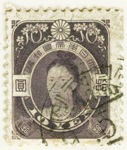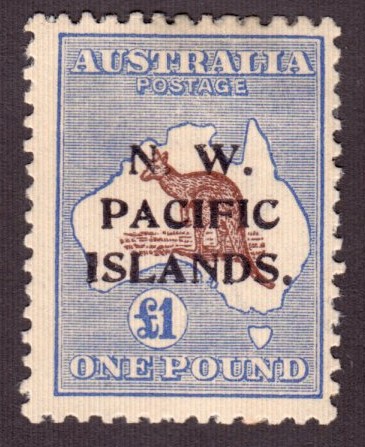
Discussion - Member to Member Sales - Research Center

Discussion - Member to Member Sales - Research Center

I'm using Vario 8S to sort stamps by denomination (face value?) I'm using the Mystic 2019 catalog to familiarize myself with the Scott numbers. A Scott catalog is on my wishlist, but there is one in the reference section of a nearby library, if needed now.
I'm currently sorting kiloware purchased from Mystic and Amazon. I think kiloware is the correct term.
I've read about collectors keeping "ugly" copies until a better specimen comes along. Can you help me learn about what defines a great stamp? I don't yet understand all of the examples in the catalog. What defines a poor stamp?
How do YOU determine when given two samples of the same stamp?
Thank you in advance for any help you can provide.

Login to Like
this post
Most want stamps essentially as close to as issued as possible. This means no missing parts, not torn or wrinkled, a light cancellation (does not obliterate design), perforations intact, etc. The backside can be important to some as well (no stuck paper, mounting hinge remnants, etc).

1 Member
likes this post.
Login to Like.
Quality for a modern stamp (post 1950) is basically as explained above.
If you come across an older stamp then that definition can really change.
Some older stamps have ragged perforations, the design is cut into the perfs, they may be very off center, some countries used very heavy cancels others tore or mutilated the stamp.
The catalog will often give you this information.

1 Member
likes this post.
Login to Like.
"Spacefiller" is the term for stamps in poor condition in the album. They are often present when the stamp in better shape is on the pricey side. Personally, I prefer to keep the album space blank until I find a good copy. Needless to say, I have a lot of empty spaces!
I keep my spacefillers in a stockbook.
Geoff

Login to Like
this post
Thank you very much! I knew that there were undesirable things about some of these stamps, but I wasn't able to put my finger on it. Thank you very much.
I'm not sure what a stock book is. May I have a link to an example, please?

Login to Like
this post
For a stockbook, think of your Vario pages bound into a book rather than looseleaf.

Login to Like
this post
Thank you! That makes complete sense.

Login to Like
this post

Here's an example 

Login to Like
this post
Thank you! It turns out I made one out of a binder, lol.

Login to Like
this post
Excellent choice!


Login to Like
this post
04:27:14pm
I have been a stamp collector for exactly nine days. Please help me by keeping technical jargon to a minimum (or kindly provide a definition so I don't spend the next nine days MORE confused.) Please and thank you.
I'm using Vario 8S to sort stamps by denomination (face value?) I'm using the Mystic 2019 catalog to familiarize myself with the Scott numbers. A Scott catalog is on my wishlist, but there is one in the reference section of a nearby library, if needed now.
I'm currently sorting kiloware purchased from Mystic and Amazon. I think kiloware is the correct term.
I've read about collectors keeping "ugly" copies until a better specimen comes along. Can you help me learn about what defines a great stamp? I don't yet understand all of the examples in the catalog. What defines a poor stamp?
How do YOU determine when given two samples of the same stamp?
Thank you in advance for any help you can provide.

Login to Like
this post

re: Choosing Between Duplicates
Most want stamps essentially as close to as issued as possible. This means no missing parts, not torn or wrinkled, a light cancellation (does not obliterate design), perforations intact, etc. The backside can be important to some as well (no stuck paper, mounting hinge remnants, etc).

1 Member
likes this post.
Login to Like.

re: Choosing Between Duplicates
Quality for a modern stamp (post 1950) is basically as explained above.
If you come across an older stamp then that definition can really change.
Some older stamps have ragged perforations, the design is cut into the perfs, they may be very off center, some countries used very heavy cancels others tore or mutilated the stamp.
The catalog will often give you this information.

1 Member
likes this post.
Login to Like.
07:10:50pm
re: Choosing Between Duplicates
"Spacefiller" is the term for stamps in poor condition in the album. They are often present when the stamp in better shape is on the pricey side. Personally, I prefer to keep the album space blank until I find a good copy. Needless to say, I have a lot of empty spaces!
I keep my spacefillers in a stockbook.
Geoff

Login to Like
this post
07:38:29pm
re: Choosing Between Duplicates
Thank you very much! I knew that there were undesirable things about some of these stamps, but I wasn't able to put my finger on it. Thank you very much.
I'm not sure what a stock book is. May I have a link to an example, please?

Login to Like
this post

re: Choosing Between Duplicates
For a stockbook, think of your Vario pages bound into a book rather than looseleaf.

Login to Like
this post
05:33:05am
re: Choosing Between Duplicates
Thank you! That makes complete sense.

Login to Like
this post

re: Choosing Between Duplicates

Here's an example 

Login to Like
this post
08:51:32am
re: Choosing Between Duplicates
Thank you! It turns out I made one out of a binder, lol.

Login to Like
this post

re: Choosing Between Duplicates
Excellent choice!


Login to Like
this post

